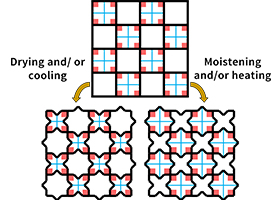- 2.2Impact Factor
- 5.3CiteScore
- 18 daysTime to First Decision
Metamaterials and Symmetry
This special issue belongs to the section “Chemistry: Symmetry/Asymmetry“.
Special Issue Information
Metamaterials are solids that are microstructured in such a manner that their overall behavior is predominantly determined by the geometrical properties of the microlattices rather than by the characteristics of the base materials. As a consequence, metamaterial properties can be pushed to extremal positive and negative values that well surpass the properties of naturally occurring materials, thereby opening up possibilities to design materials, structures and devices that have not been achievable until recently. Beyond the realms of physics and materials science, in which metamaterials have traditionally been investigated, modern research in metamaterials has penetrated the domains of chemistry, biology and even consumer products. This Special Issue is focused on the influence of symmetry and asymmetry of microarchitectures on the properties of metamaterials. Topics may include, but are not limited to, the following broad categories:
- Acoustic and mechanical metamaterials;
- Electromagnetic and optical metamaterials;
- Metamaterials with extremal values;
- Metamaterials with negative parameters.
Prof. Dr. Teik-Cheng Lim
Guest Editor
Manuscript Submission Information
Manuscripts should be submitted online at www.mdpi.com by registering and logging in to this website. Once you are registered, click here to go to the submission form. Manuscripts can be submitted until the deadline. All submissions that pass pre-check are peer-reviewed. Accepted papers will be published continuously in the journal (as soon as accepted) and will be listed together on the special issue website. Research articles, review articles as well as short communications are invited. For planned papers, a title and short abstract (about 250 words) can be sent to the Editorial Office for assessment.
Submitted manuscripts should not have been published previously, nor be under consideration for publication elsewhere (except conference proceedings papers). All manuscripts are thoroughly refereed through a single-blind peer-review process. A guide for authors and other relevant information for submission of manuscripts is available on the Instructions for Authors page. Symmetry is an international peer-reviewed open access monthly journal published by MDPI.
Please visit the Instructions for Authors page before submitting a manuscript. The Article Processing Charge (APC) for publication in this open access journal is 2400 CHF (Swiss Francs). Submitted papers should be well formatted and use good English. Authors may use MDPI's English editing service prior to publication or during author revisions.

Benefits of Publishing in a Special Issue
- Ease of navigation: Grouping papers by topic helps scholars navigate broad scope journals more efficiently.
- Greater discoverability: Special Issues support the reach and impact of scientific research. Articles in Special Issues are more discoverable and cited more frequently.
- Expansion of research network: Special Issues facilitate connections among authors, fostering scientific collaborations.
- External promotion: Articles in Special Issues are often promoted through the journal's social media, increasing their visibility.
- e-Book format: Special Issues with more than 10 articles can be published as dedicated e-books, ensuring wide and rapid dissemination.

